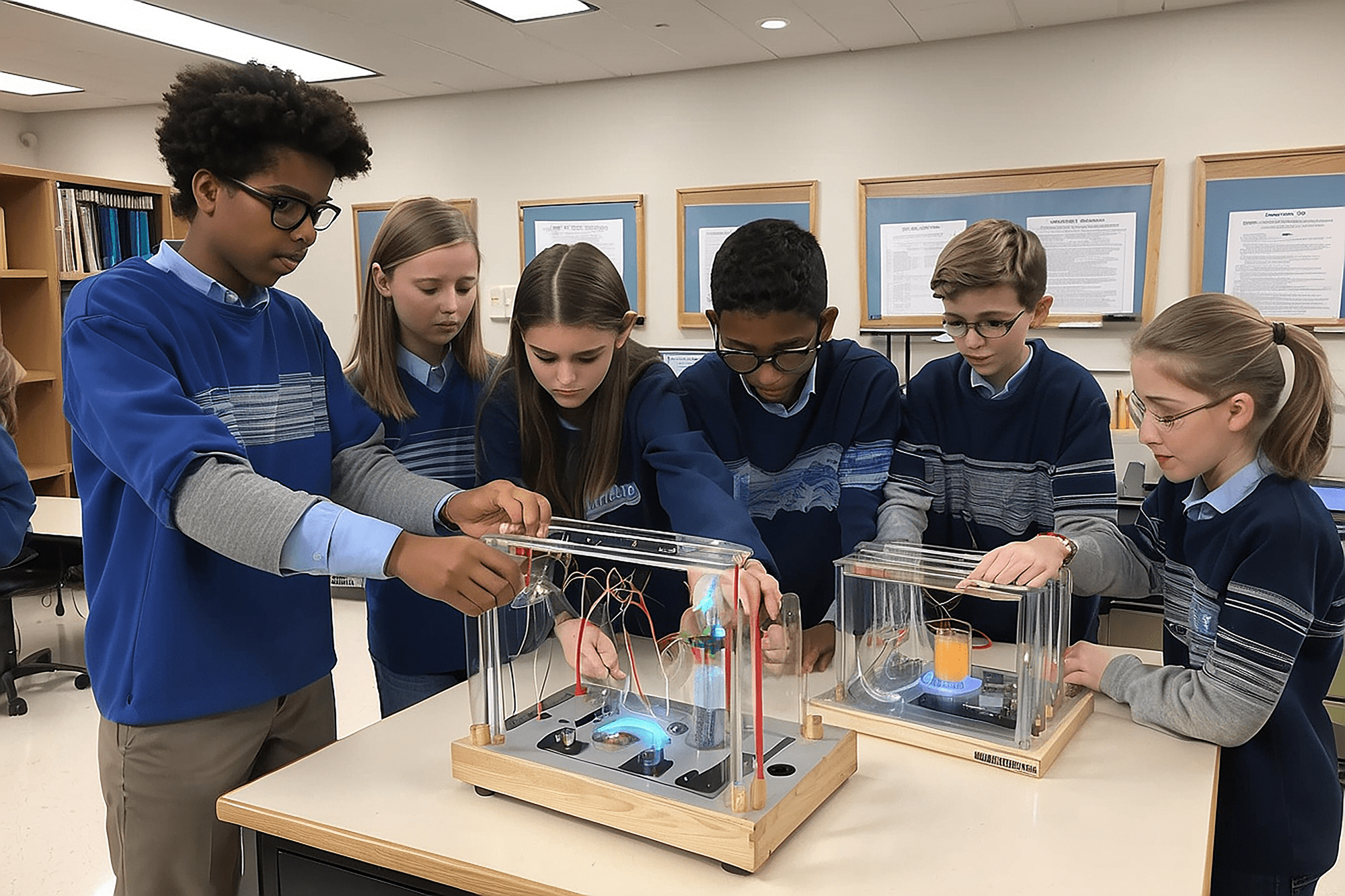Introduction
A child’s growth is a journey that extends far beyond academics. While textbooks sharpen the mind, it’s often extracurricular activities that shape the heart, body, and spirit. These programs encourage self-expression, build social connections, and help children discover who they are.
At CMR Gandhi Public School, we believe in nurturing the whole child—intellectually, physically, emotionally, and socially. That’s why our extracurricular programs are as thoughtfully designed as our academic ones.
Beyond Academics: Why All-Round Development Matters
In the 21st century, success depends not just on knowledge, but on adaptability, creativity, collaboration, and emotional intelligence. Extracurricular activities in child development are powerful tools to build these essential life skills.
Research also shows that these activities stimulate different areas of the brain and positively impact overall development—including memory, attention, decision-making, and emotional regulation.
Types of Extracurricular Activities and Their Benefits
Let’s explore some of the most popular extracurricular activities and how each contributes to a child’s mental, emotional, social, and physical growth.
1. Sports and Physical Activities (e.g., Football, Basketball, Karate)
- Body: Improves strength, coordination, stamina, and overall physical fitness
- Mind: Enhances concentration, goal-setting, and stress relief
- Skills Developed: Discipline, teamwork, leadership, resilience
Physical activities help children regulate energy, reduce anxiety, and sleep better. Regular movement also supports brain development through better blood flow and the release of feel-good endorphins.
2. Performing Arts (Dance & Music )
- Body: Enhances rhythm, posture, breathing control, and fine motor skills
- Mind: Stimulates creativity, memory retention, and emotional intelligence
- Skills Developed: Public speaking, self-confidence, emotional expression
These educational activities for students help them connect with their feelings, express ideas creatively, and perform in front of others—building confidence from a young age.
3. Visual Arts (Drawing, Painting, craft)
- Body: Refines hand-eye coordination and motor control
- Mind: Encourages imagination, focus, and problem-solving
- Skills Developed: Innovation, visual-spatial thinking, patience
In young children, especially in activities for kindergarten, art enhances brain development by engaging both hemispheres—boosting creativity and observation skills.
4. Academic Clubs (Science Club, Math Club, Coding, Robotics)
- Body: Fine motor engagement in hands-on activities (e.g., assembling robots)
- Mind: Strengthens logical reasoning, innovation, and critical thinking
- Skills Developed: Teamwork, experimentation, STEM proficiency
Clubs like these transform classroom learning into real-world applications. They’re especially impactful for children with analytical or tech-oriented interests.
5. Literary Activities (Book Clubs)
- Body: Enhances voice control and articulation
- Mind: Builds vocabulary, reasoning, and memory
- Skills Developed: Communication, persuasion, confidence, active listening
Such programs boost cognitive function and linguistic intelligence—giving children tools to express themselves clearly and thoughtfully.
6. Life Skill Programs ( Gardening )
- Body: Teaches practical, real-world physical activities
- Mind: Cultivates empathy, responsibility, and self-reliance
- Skills Developed: Leadership, service mindset, environmental awareness
These activities are essential for shaping a child’s values and worldview—developing a strong character and a sense of purpose.
Brain and Body Benefits at a Glance
| Activity Type |
Body Development |
Mind Development |
| Sports |
Physical fitness, agility |
Focus, discipline, stress relief |
| Performing Arts |
Posture, movement, coordination |
Creativity, confidence, memory |
| Visual Arts |
Motor skills, hand coordination |
Imagination, observation, patience |
| Academic Clubs |
Fine motor (hands-on tools) |
Problem-solving, logical reasoning |
| Literary Programs |
Voice projection, articulation |
Communication, critical thinking |
| Life Skills |
Practical physical tasks |
Empathy, social responsibility |
5 Key Benefits of Extracurricular Activities
1. Boosts Confidence and Self-Esteem
From scoring a goal to performing on stage, achievements outside the classroom make children believe in their abilities.
2. Builds Social Skills and Teamwork
Working in teams teaches cooperation, respect, and empathy—skills vital in school and life.
3. Improves Time Management
Balancing schoolwork and extracurriculars teaches students how to plan, prioritize, and follow through.
4. Sparks Passion and Purpose
When children explore new fields—whether coding, or cricket—they discover what excites them.
5. Supports Academic and Career Growth
Well-rounded profiles are valued in college admissions and future jobs. The importance of extracurricular activities lies in how they nurture leadership, creativity, and initiative.
Even top Montessori schools in HSR Layout build their programs around the idea that experiential learning leads to deeper development.
Conclusion: A Child Who Explores, Excels
At CMR Gandhi Public School, we believe every child is unique—and their education should reflect that. Our wide variety of extracurricular programs ensures that every student gets the chance to explore their interests, develop core life skills, and become confident learners.
As one of the best schools in HSR Layout, we offer a supportive environment where academics and extracurriculars go hand-in-hand to foster complete development.
Encourage your child to explore beyond the classroom. You might just help them discover their passion—and shape their future.
Frequently Asked Questions
1. Which extracurricular activities are best for brain development?
Music, chess, math clubs, and debate enhance memory, logical thinking, and creativity - stimulating different brain areas.
2. Is it okay to start activities in kindergarten?
Absolutely! Simple activities for kindergarten like drawing, dancing, and storytelling boost motor and cognitive development from an early age.
3. Can too many extracurriculars stress my child?
Balance is key. Choose 1–2 well-suited activities and observe your child’s energy and interest level to avoid burnout.
4. How do extracurriculars help with academics?
They improve focus, reduce stress, and build executive functions like organization and planning - leading to better academic outcomes.








